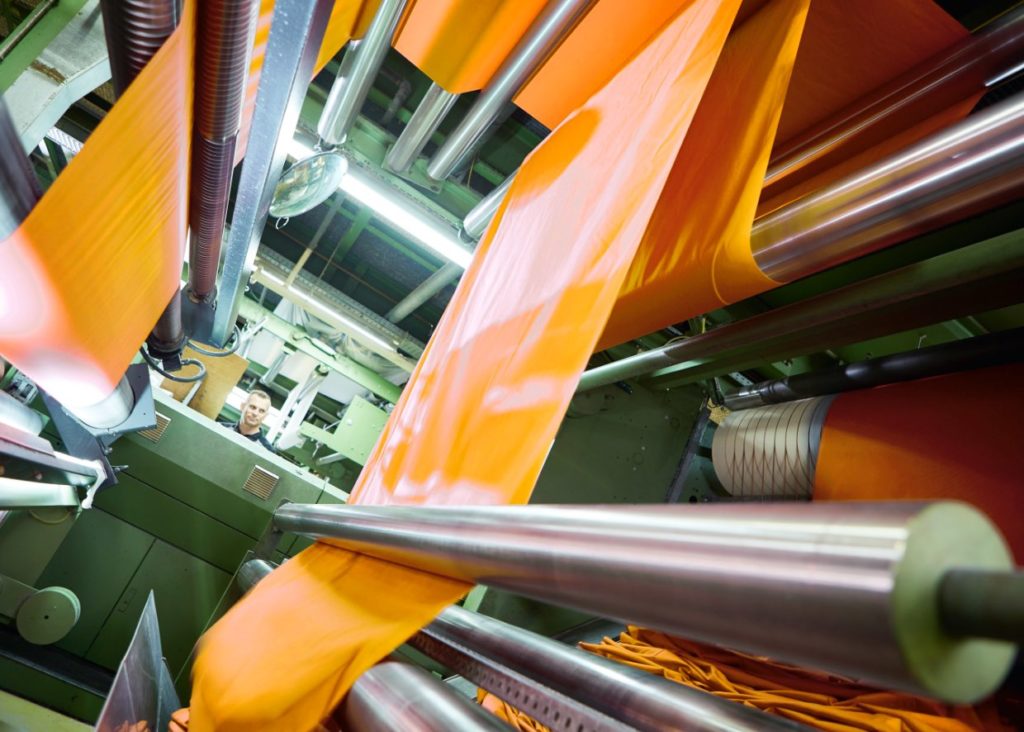CO2 footprint:More than just a number
The preparation of a carbon footprint adds an important component to the consumption figures. This is because it is only through this that the environmental impact of the various emitters becomes clear.
The preparation of our carbon footprint is an important and complementary source of information to our consumption figures. This is because it is only through this that the environmental impact of energy consumption, the use of various dyes and auxiliaries or even business trips becomes clear.
But measuring the impact of our business activities on the increase in greenhouse gases – and thus our contribution to climate change – is again only a limited consideration. In the concept of planetary boundaries, climate change is only one of nine dimensions. These include, for example, biodiversity loss, ocean acidification and air pollution. However, a real measurement of the impact at company level can currently be implemented mainly through the calculation of our CO2 footprint.
CO2 footprint for production at the Rheine site
Our CO2 footprint was drawn up using the "Eco-Cockpit" programme by the regional agency “Effizienzagentur NRW”. This programme is based on the Greenhouse Gas Protocol, which is a globally valid documentation instrument for recording greenhouse gases. The holistic approach looks at three different areas, the so-called “scopes”.
kg CO2 equivalent
| Direct emissions generated and controlled by the company. This includes, among other things, the use of energy sources for combustion, such as natural gas. | ||
Emission source | kgCO2e | Share |
| Natural gas | 5.209.755 | 77.3 % |
| Indirect emissions based on the generation of purchased electricity or steam. | ||
| Emission source | kgCO2e | Share |
| Power | 241.930 | 3,6% |
| Other indirect emission sources that are not under the direct control of the company calculating its carbon footprint. This includes, among other things, the procurement of basic chemicals. | ||
| Emission source | kgCO2e | Share |
| Dyes and auxiliaries | 1.097.925 | 16.3% |
| Water | 601 | 0.01 % |
| Business trips | 47.422 | 0,7 % |
| Employee mobility | 85.110 | 1,3 % |
| Disposal | 56.937 | 0.8 % |
External links

Our detailed CO2 footprint incl. a description of the calculation and system limits can be found in our current →Environmental Statement.
What is the level of CO2 emissions in the manufacture of a bed linen set?
We can answer this question! We have already prepared over 50 product footprints for various clients. Sometimes, the information was used to decide on new projects, and sometimes to draw up their own carbon footprint. Of course, every customer always receives background information on the collection of data and the structure of the footprint analysis. This is because transparency is the be-all and end-all of determining a CO2 footprint!

kg CO2 equivalent
that are created during the production of a pillow and duvet set
Other emitters are yarn, waste water, waste and transport.
Further articles on the topic
STeP by OEKO-TEX®
STeP by OEKO-TEX® STeP by OEKO-TEX® is a modular certification system for production facilities in the...
CO2 Footprint – more than just a number!
The preparation of a carbon footprint adds an important component to the consumption figures. This is...
Our fibre stars
The high quality and durability of our fabrics already contribute to sustainability. Because the more ...



